PERFORMANCE TECHNOLOGY INNOVATIVE MARKETING
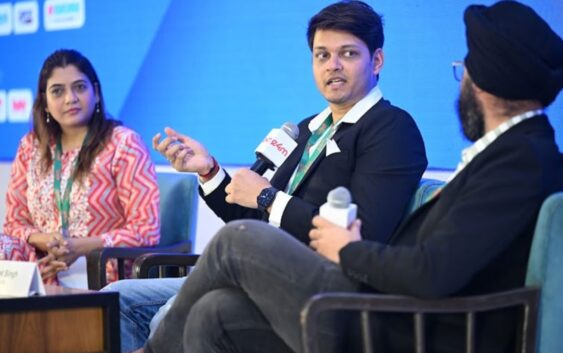
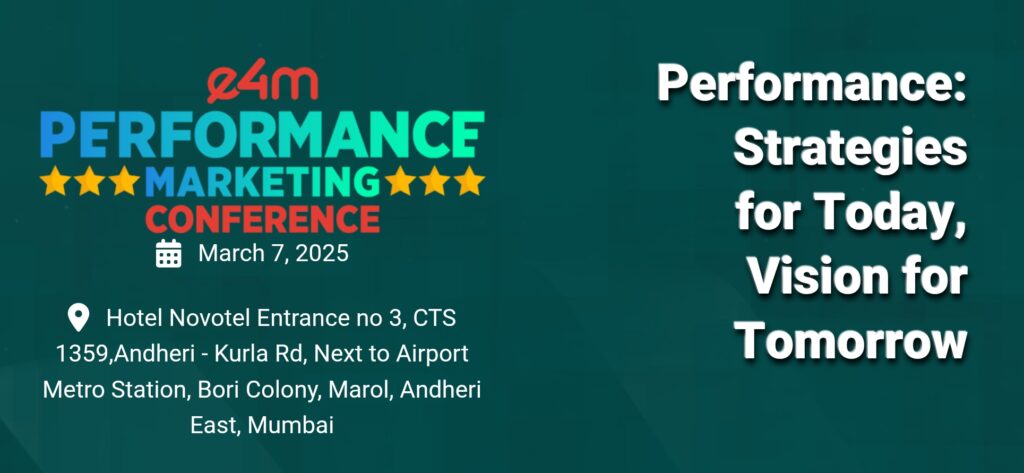
The e4m Performance Marketing Conference 2025, held in Mumbai on 7th March 25, with the theme of ‘Performance: Strategies for Today, Vision for Tomorrow,’ brought together influential marketers and agency executives from India and abroad to explore the evolving landscape of performance marketing. Key topics discussed included emerging trends, technological advancements, and changing consumer behaviors, as well as the potential for harmonious integration of brand building and performance marketing.
The event featured expert panel discussions on a range of subjects, such as the future of AI-driven performance marketing, leveraging first-party data, programmatic advertising, attribution modeling, and influencer marketing strategies. Participants gained valuable insights into optimizing marketing spend and maximizing ROI in an ever-changing industry.
In addition to thought-provoking discussions, the conference provided a platform for networking and collaboration, fostering mutually beneficial partnerships among attendees. The inaugural e4m Performance Marketing Awards 2024 further celebrated excellence and innovation within the field, recognizing outstanding achievements and groundbreaking strategies in performance marketing.
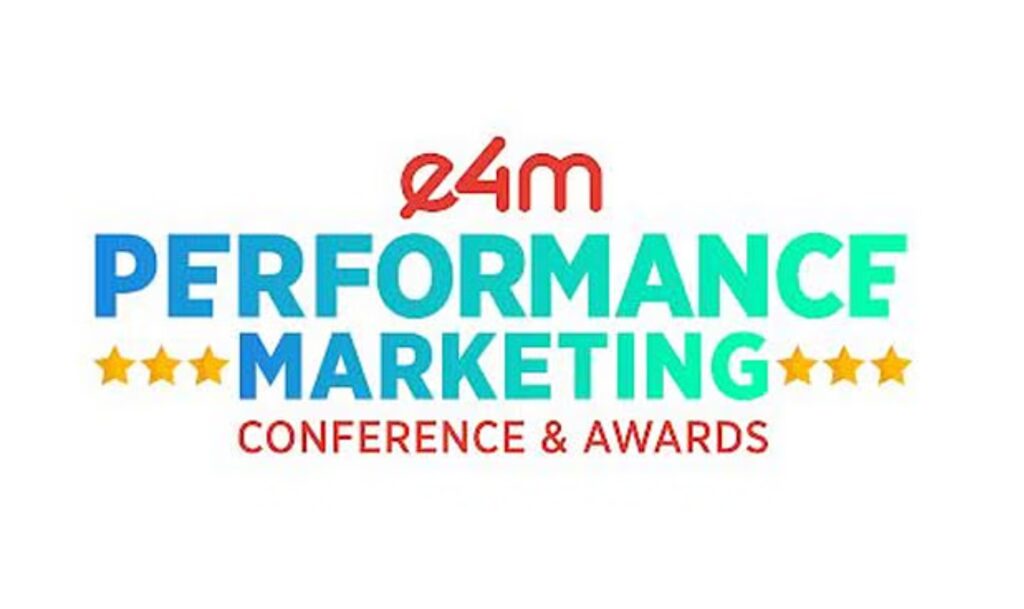
The Performance Marketing Conference, themed “Performance: Strategies for Today, Vision for Tomorrow,” served as a prominent platform for industry experts and business leaders to delve into contemporary strategies and forward-looking insights that drive success in performance marketing. Attendees gained valuable knowledge on a range of topics, equipping them with the tools and understanding needed to adapt and thrive in the ever-changing digital landscape.
Key discussion points included:
Personalization vs. Scalability: Speakers addressed the importance of balancing personalization to engage customers while maintaining scalability to drive growth. They explored how leveraging data and technology can help marketers achieve both objectives.
MarTech’s Role: Experts discussed the significance of marketing technology in today’s digital era. They shared insights on how businesses can effectively utilize MarTech to optimize marketing efforts, enhance customer experience, and improve ROI.
Attribution and Consumer Experience: The conference examined the evolution of attribution and its impact on shaping consumer experiences in performance marketing. Presenters emphasized the importance of understanding the customer journey and implementing advanced attribution models to drive better results.
Future of Performance Marketing: Leaders provided their visions for the future of performance marketing, touching on emerging trends, innovative strategies, and the increasing role of AI, machine learning, and automation in optimizing marketing campaigns.
Overall, the Performance Marketing Conference proved to be an invaluable resource for attendees seeking to stay ahead of the curve in an increasingly competitive industry. By fostering a platform for knowledge-sharing and collaboration, the event contributed to the ongoing growth and success of performance marketing professionals.
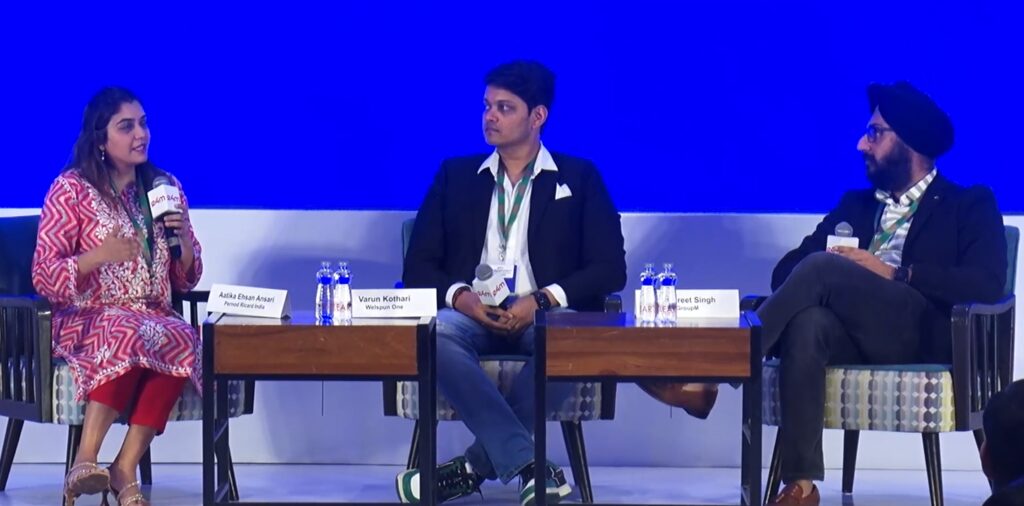
At the Panel Discussion – The Creative Dilemma – Personalisation vs. Scalability for performance marketers, panelists Aatika Ehsan Ansari, Head of Media-Digital, Pernod Ricard India, Varun Kothari, Head- Digital Marketing, Welspun One and Moderator- Gurpreet Singh, Head Performance, GroupM provided valuable insights on balancing personalization with scalability, which offered valuable insights for marketers navigating this complex landscape and for developing marketing strategies that are both personalized enough to resonate with consumers and scalable enough to drive business results, brands continue to navigate the evolving digital landscape.
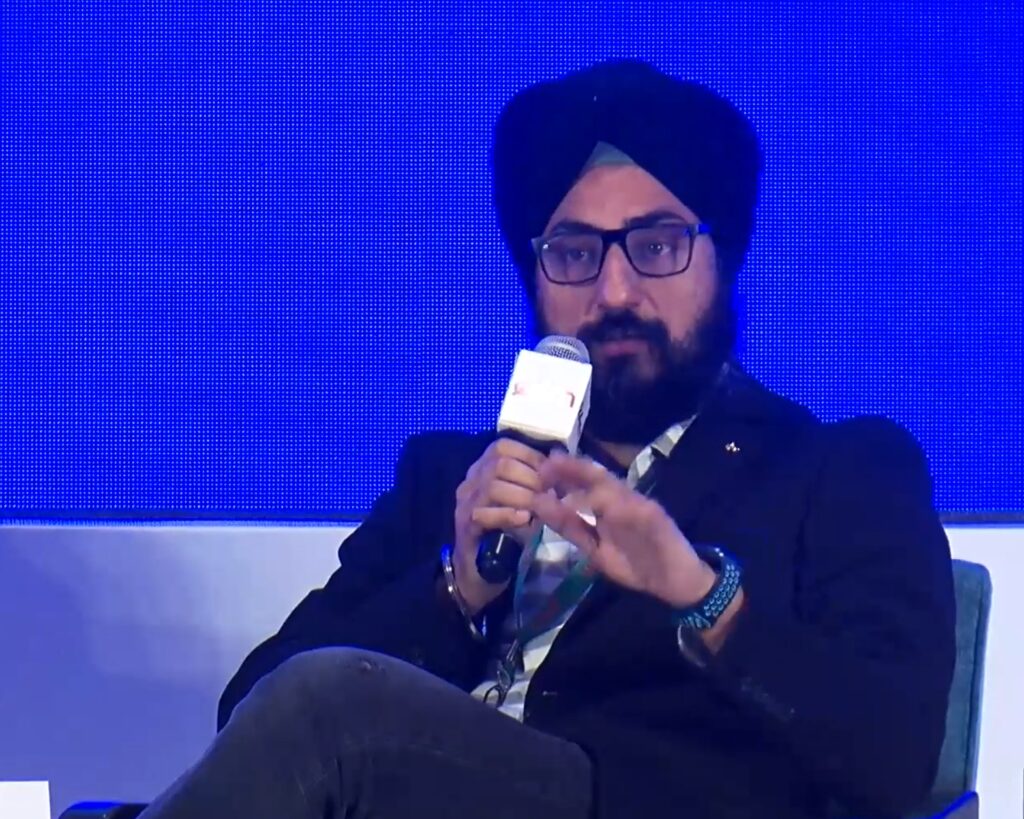
Setting the Stage: The Personalization-Scalability Challenge –
Gurpreet Singh, Head Performance at GroupM, framed the session by highlighting the fundamental tension between personalization and scalability in modern marketing. He described this relationship as an “inverted triangle” where increasing personalization often results in decreasing scalability. “Can we do personalization at scale? Because the moment you talk about scale, the personalization goes for a toss,” Singh explained, setting the tone for a practical discussion around this marketing dilemma. Singh further contextualized the challenge by noting that consumer journeys are no longer linear, requiring brands to find innovative ways to stand out and connect meaningfully with their audiences.
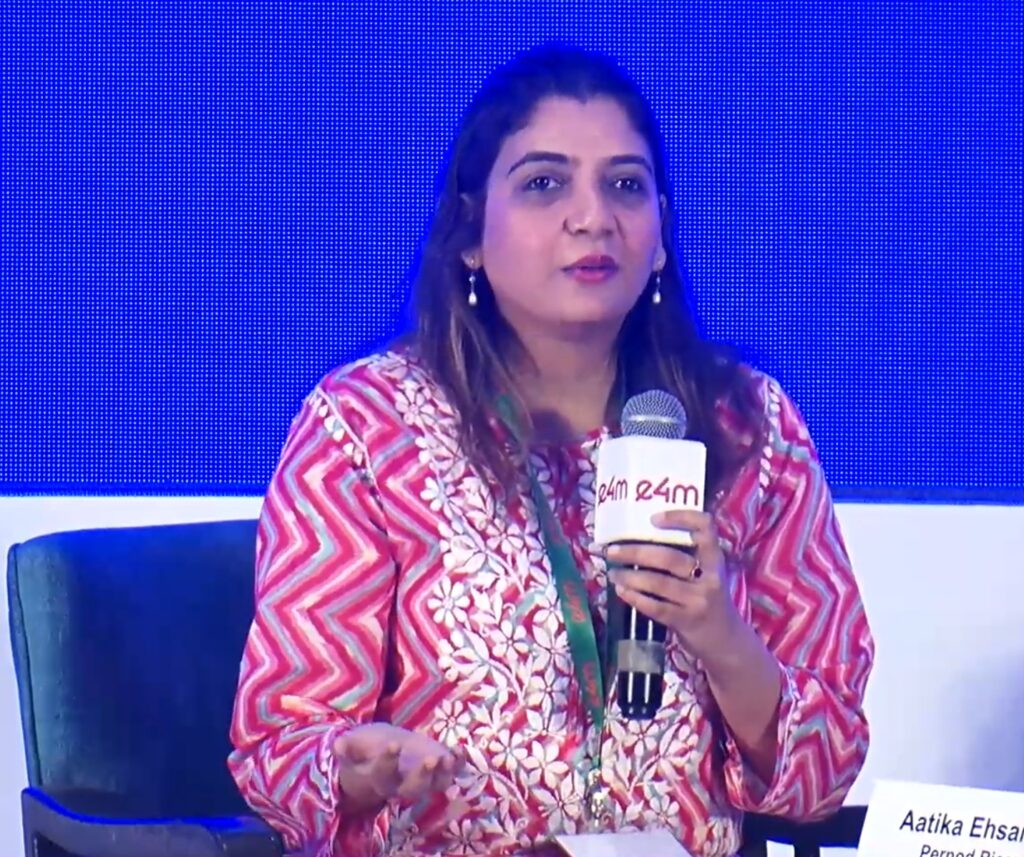
Aatika Ehsan Ansari: Finding the Balance Between Personalization and Scale
Aatika Ehsan Ansari, Head of Media-Digital at Pernod Ricard India, brought a nuanced perspective to the discussion, challenging the notion that personalization and scalability must be mutually exclusive.Key Takeaways from Ansari:
- Balancing Act is Possible: “Personalization, creative personalization, and scale—they don’t have to be at odds with each other. There’s a way to balance them, but if you go too specific, I think one of them will inevitably be lost,” Ansari emphasized.
- Real-World Application: She shared a compelling case study about leveraging personalization for event marketing. For a Hardy Sandhu performance in Mumbai, her team identified the 500 most common names of males aged 25-35 on YouTube and created personalized video invitations from the artist.
- Understanding Personalization Boundaries: The campaign revealed important insights about consumer preferences. “53% of the consumers were very delighted to hear someone like a celebrity taking their name, asking them to buy a ticket and come see him perform. But we actually got messages and emails from the remaining people saying it was intrusive,” Ansari revealed.
- Timing and Context Matter: Ansari highlighted that personalization isn’t just about using someone’s name but also about when and how consumers see advertisements. The right timing and context can make personalization more effective and less intrusive.
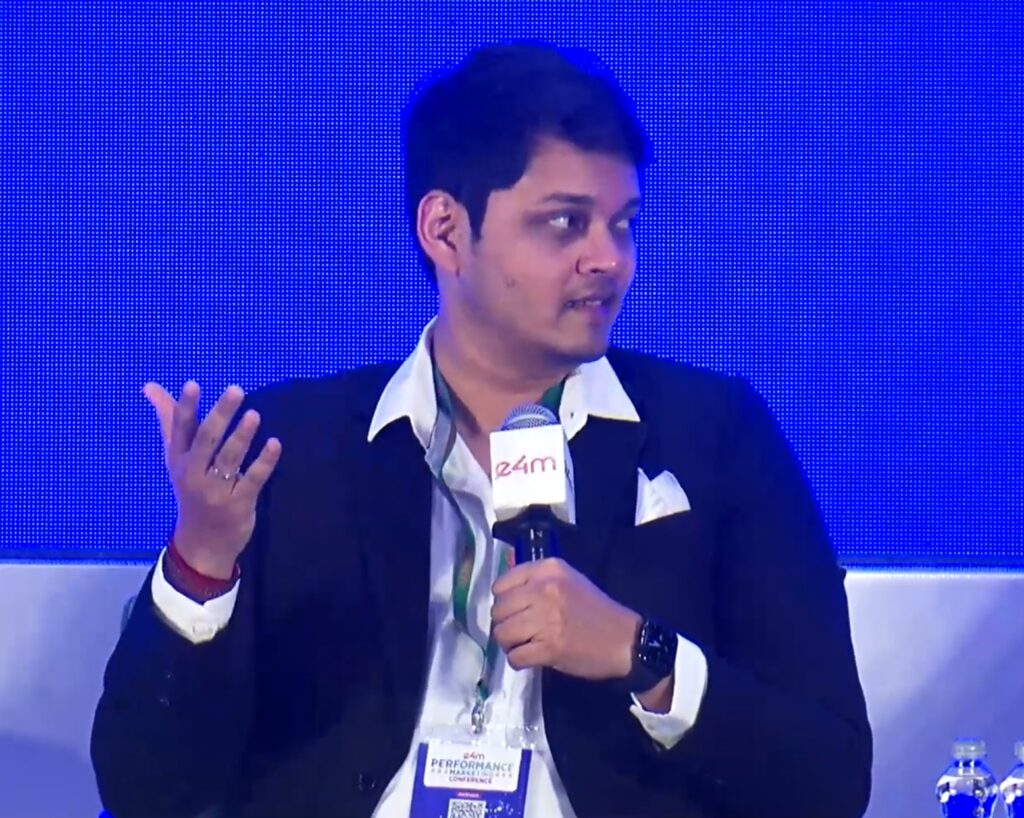
Varun Kothari: Strategic Approaches to Scalable Personalization
Varun Kothari, Head-Digital Marketing at Welspun One, offered practical insights from both B2B and B2C perspectives on implementing personalization at scale.Key Takeaways from Kothari:
1. Time-Based Personalization: Kothari shared examples of personalizing advertisements based on time rather than just demographic information. He described successful campaigns that targeted users during specific time frames, such as late-night advertisements for snacking between 10 PM and 3 AM.
2. Funnel-Based Personalization Strategy: He advocated for a strategic approach where upper-funnel marketing can remain more generic to attract audiences, while middle and bottom-funnel efforts require greater personalization to be effective.
3. Building Measurement into Personalization: Kothari emphasized the importance of measuring the effectiveness of personalization efforts through metrics like traffic, social media engagement, and conversion rates to justify additional investments
4. Finding Industry-Specific Balance: He acknowledged that different industries require different approaches to balancing personalization and scale, suggesting that marketers should adapt their strategies based on their specific business context.
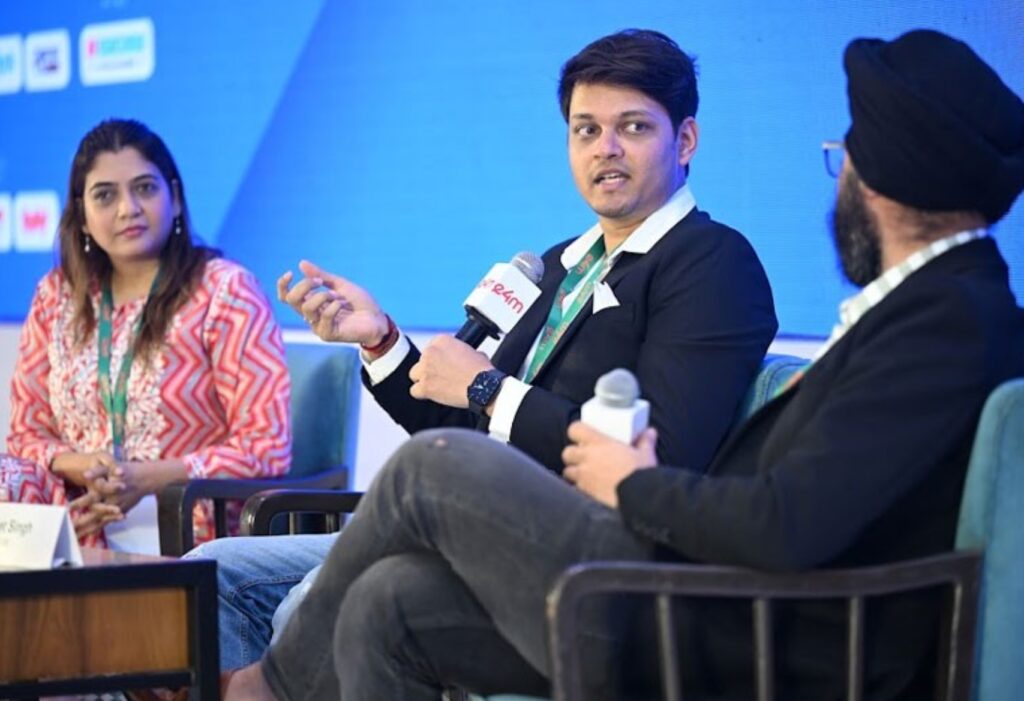
Practical Wisdom for Performance Marketers
The panel discussion highlighted that the challenge of balancing personalization and scalability remains a creative dilemma for performance marketers. While increasing personalization can enhance engagement, it must be implemented thoughtfully to avoid crossing boundaries that consumers find intrusive.
The conversation underscored that successful performance marketing in 2025 requires not just technological tools for personalization but also a nuanced understanding of consumer preferences and boundaries. By taking a strategic approach—personalizing at the right time, in the right context, and at appropriate stages of the consumer journey—marketers can achieve the elusive balance between personalization and scale.
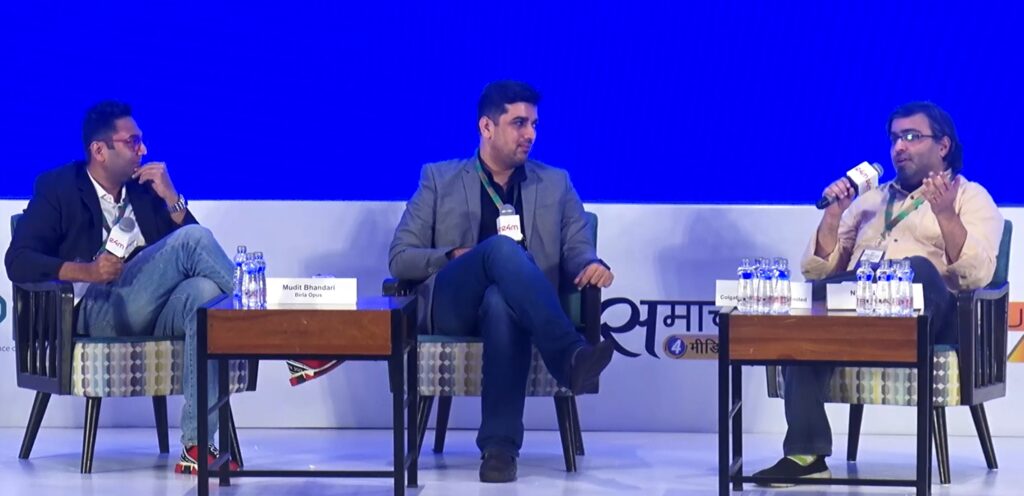
Panel discussion on the The Evolution of Attribution in Performance Marketing, industry leaders dissected the complexities of attribution models in an era defined by fragmented consumer journeys and data overload. Panelists were -Mudit Bhandari, Head Digital & Performance Marketing, Birla Opus Pratyush Jha, Lead – e-Commerce Marketing, Colgate-Palmolive (India) Limited and Moderator- Nihal Nambiar, SVP – Strategic Solutions, Iprospect Underscored the need for adaptive, context-driven approaches to attribution. Key themes included the limitations of last-click models, the role of artificial intelligence in multi-touch attribution, and the imperative to align measurement frameworks with business objectives.
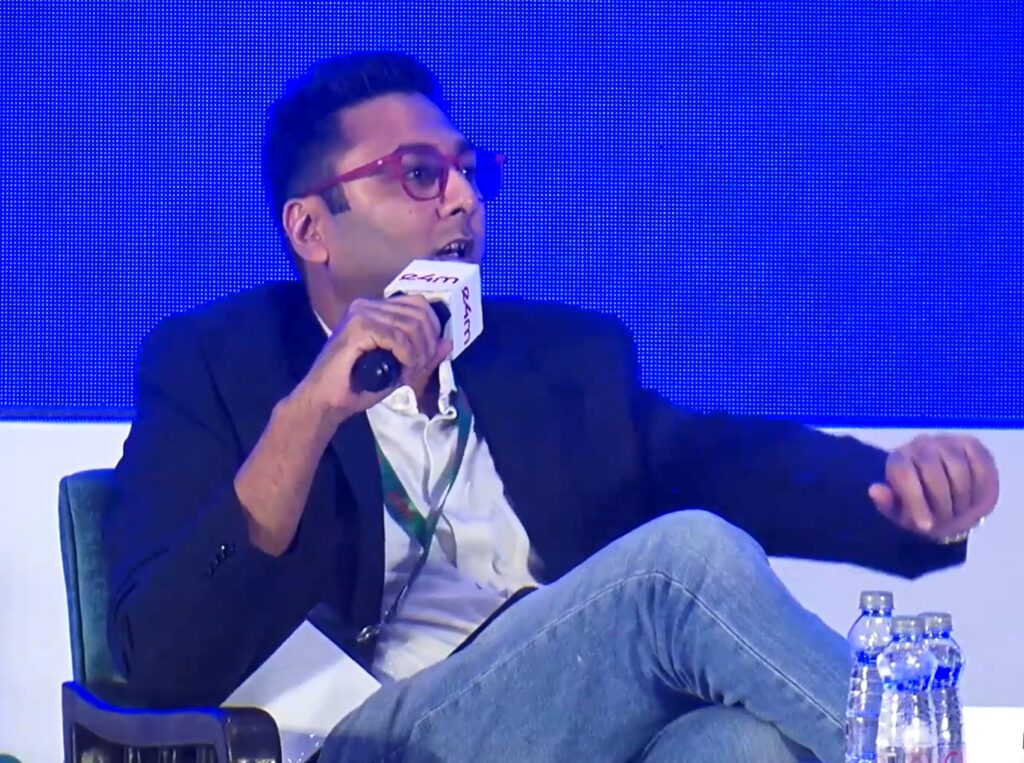
Rethinking Attribution in a Multi-Channel Landscape – The Limitations of Traditional Models
Mudit Bhandari opened the discussion by challenging the industry’s reliance on last-click attribution, describing it as “easily measurable but misleading”. He contrasted this with probabilistic models that account for multiple touchpoints, arguing that deterministic approaches fail to capture the complexity of modern consumer journeys. Bhandari cited India’s 90% mobile penetration and 700 million active digital users as drivers of this shift, noting that linear attribution frameworks cannot accommodate non-linear paths to conversion.
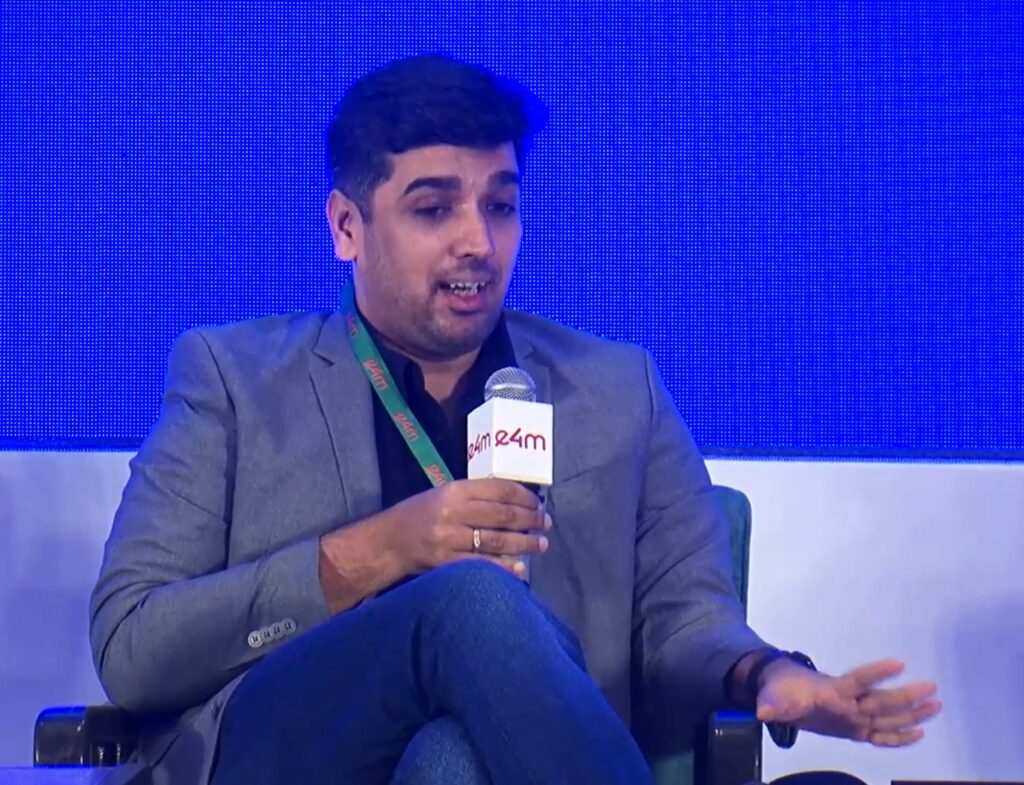
Pratyush Jha expanded on this by highlighting the paradox of performance marketing: while it generates immediate revenue, its contribution to long-term brand equity often goes unmeasured. “Performance marketing has created household names for new-age brands, but we’ve reduced consumers to data points,” he observed, emphasizing the need to reconcile short-term conversions with sustained brand-building efforts.
Bhandari proposed a hybrid solution combining deterministic data (e.g., CRM systems) with probabilistic modeling powered by machine learning. He shared Birla Opus’s experimentation with regression analysis to weight touchpoints, revealing that upper-funnel video ads contributed 23% more to conversions than previously measured through last-click models.
Strategic Approaches to Attribution – Contextual Alignment with Business Objectives The panel unanimously stressed that attribution models must be tailored to specific business contexts. Jha provided a case study from Colgate-Palmolive’s “Visible White Purple” toothpaste launch, where last-click attribution overstated search ads’ impact by 40% compared to multi-touch analysis. “The campaign’s top-of-funnel TV and digital video creatives drove 62% of branded searches, yet received zero credit in simplistic models,” he explained.
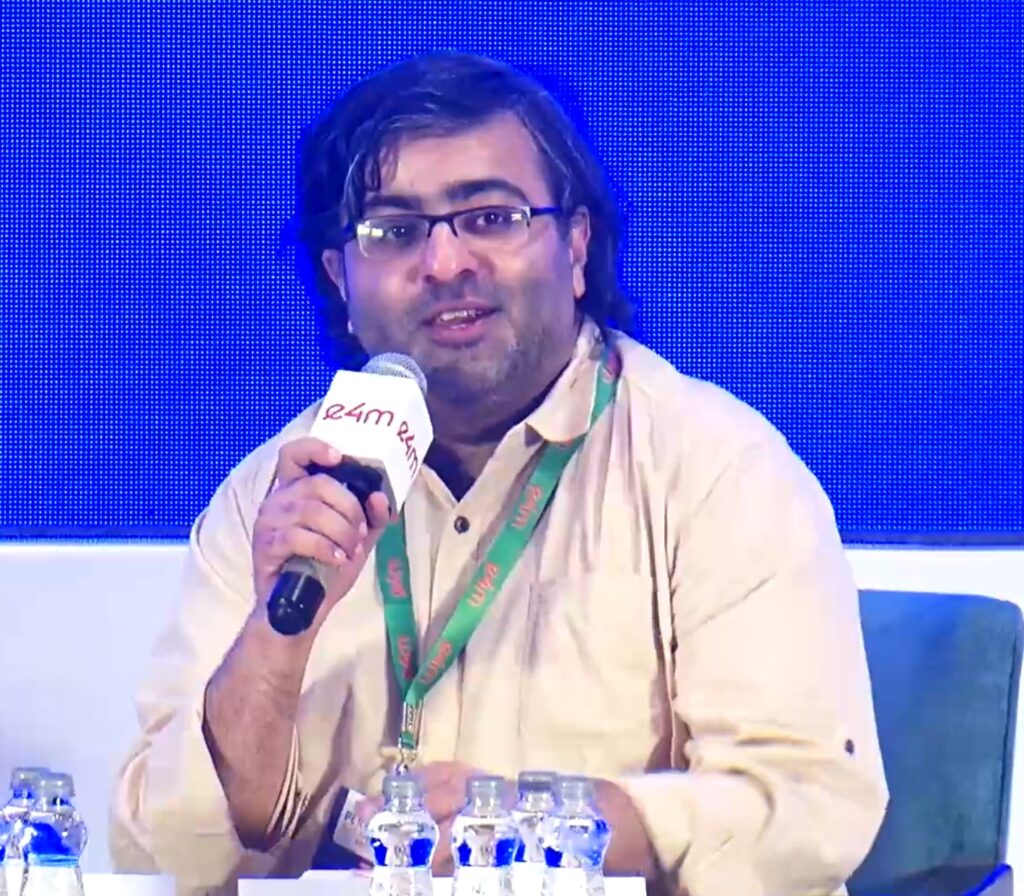
Technological Enablers and Barriers
Nambiar steered the conversation toward emerging tools, asking panelists to evaluate in-house versus outsourced attribution solutions. Prabhu advocated for controlled environments when handling sensitive data: “Healthcare brands like Sanofi keep patient journey analytics entirely in-house due to privacy regulations, while leveraging third-party tools for less sensitive verticals”.
Bhandari highlighted Birla Opus’s partnership with CDP providers like BlueConic, which enables cross-channel stitching of data from e-commerce platforms, retail POS systems, and social media. However, he cautioned that “AI-driven attribution requires clean, normalized data—a challenge when 30% of our sales still occur through offline distributors”.
Industry-Specific Attribution Challenges – CPG vs. High-Consideration Verticals
The discussion revealed stark differences across sectors. Jha outlined Colgate-Palmolive’s 7-day attribution window for quick commerce campaigns, where 89% of conversions occur within 48 hours. Conversely, Kothari detailed Future Generali’s 90-day model for life insurance policies, emphasizing that “attribution windows must mirror category purchase cycles”.
Bhandari introduced a middle ground for durable goods, where Birla Opus uses a 30-day sliding window weighted by engagement intensity. Their analysis showed that consumers interacting with three+ touchpoints converted at 2.4× the rate of single-exposure users, validating the need for granular sequencing analysis.
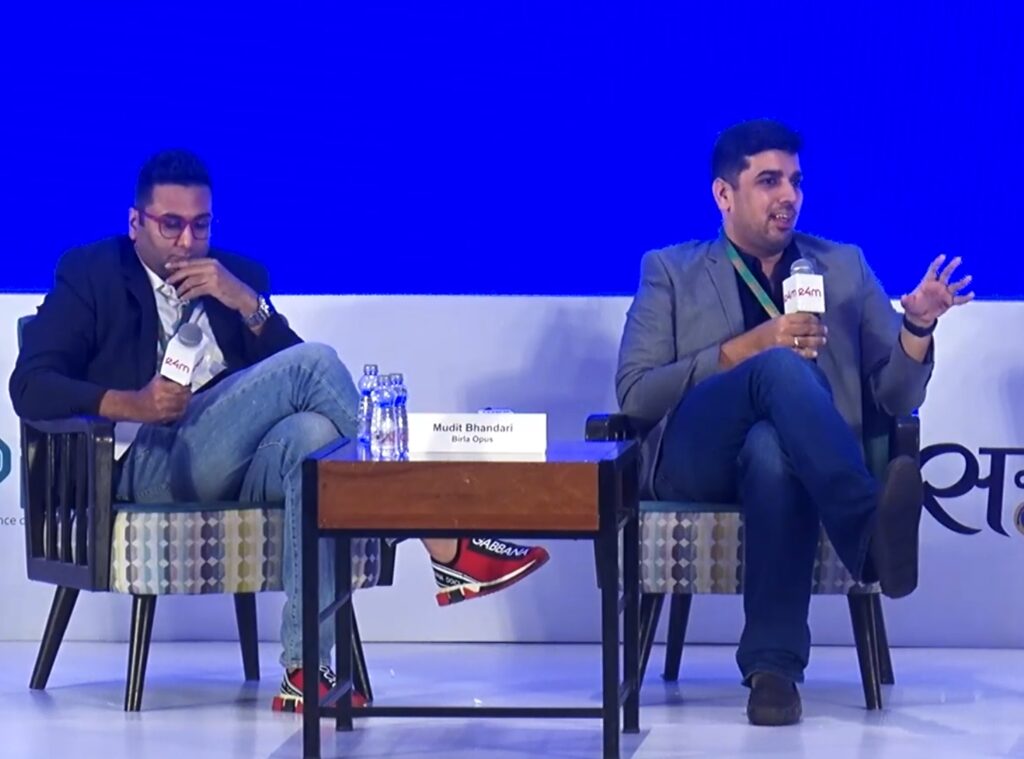
Future Directions in Attribution Science – AI and Predictive Modeling
Panelists agreed that machine learning will dominate next-gen attribution. Jha shared Colgate-Palmolive’s pilot of a reinforcement learning system that dynamically allocates budgets across channels, boosting ROAS by 19% in Q4 2024. However, he warned that “black-box models require guardrails to prevent over-optimization for low-value conversions”.
Bhandari predicted the rise of “attribution as a service” platforms offering vertical-specific algorithms. He cited Birla Opus’s tests with a retail-focused AI model that reduced customer acquisition costs by 33% through better identification of high-intent micro-moments.
The panel concluded that attribution in 2025 is less about finding a universal solution than about building adaptable, context-aware systems. Key recommendations included:

